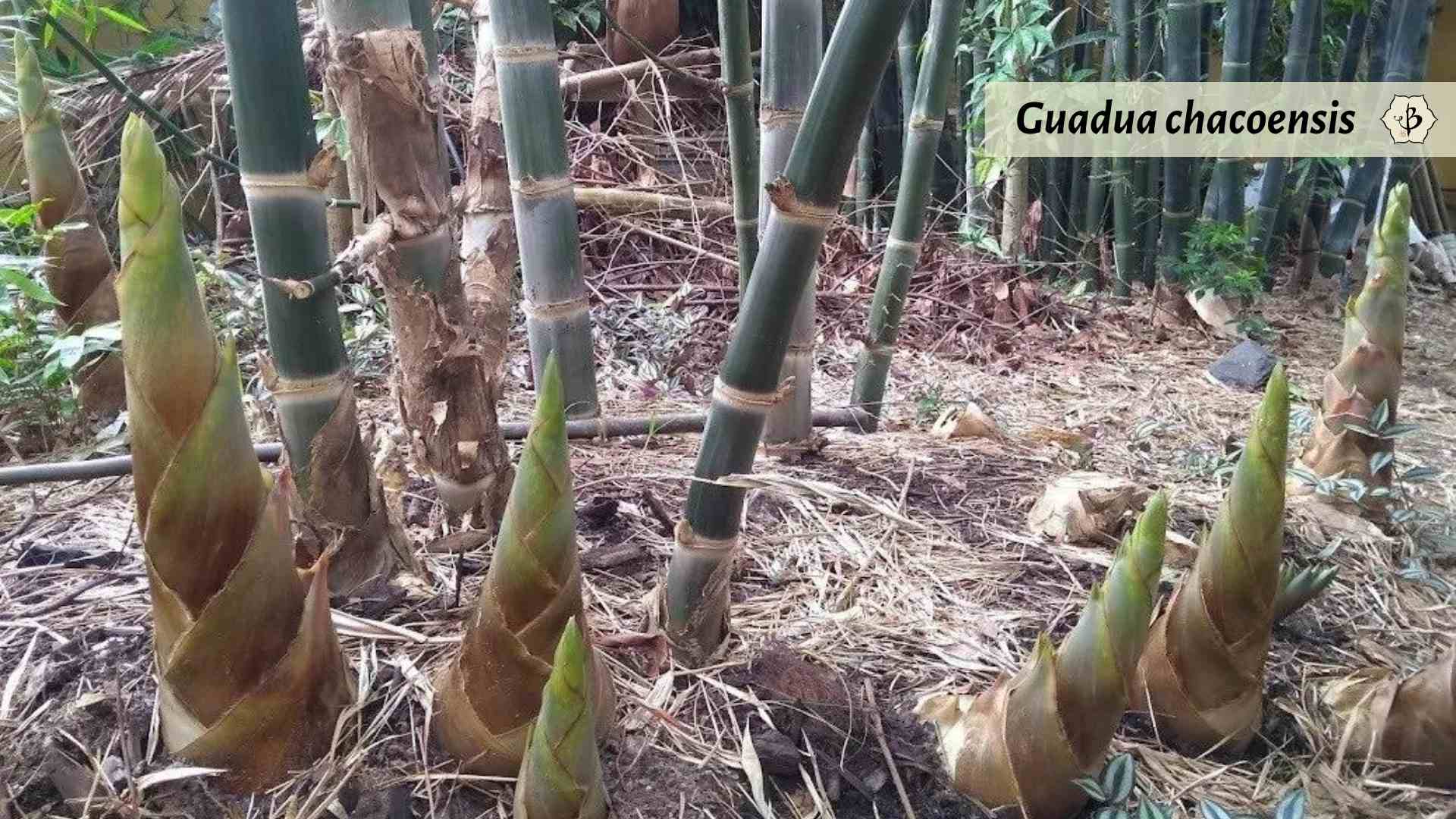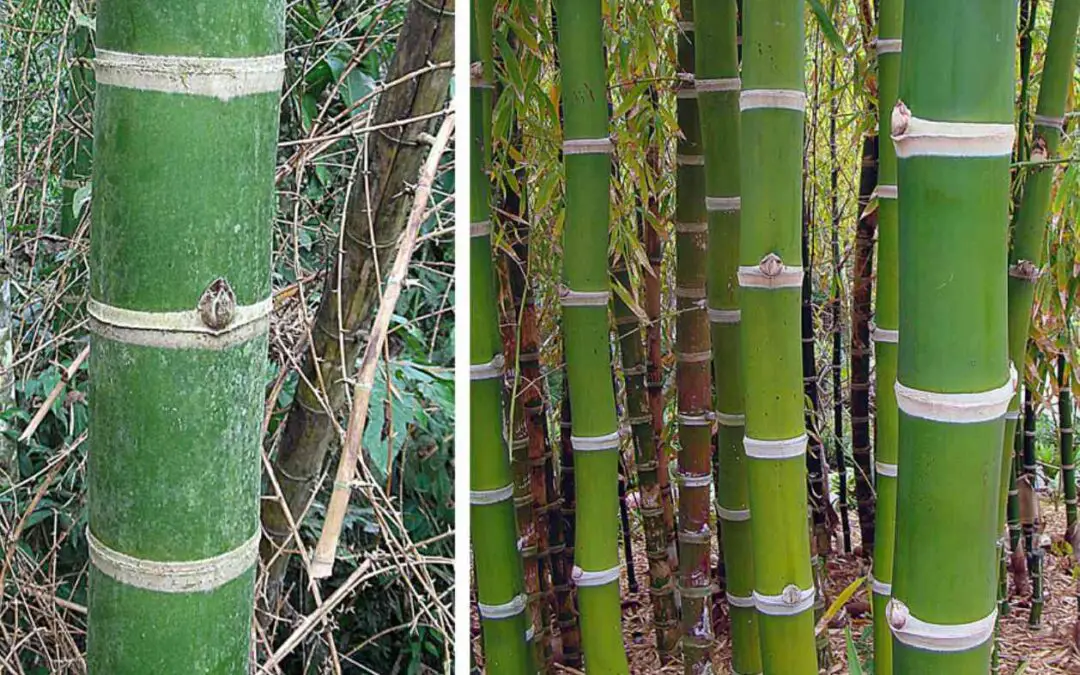While we consider China and the Far East as the native home of bamboo, there are also some magnificent bamboo species indigenous to the New World. Central and South America actually have some of the most majestic bamboo varieties of them all. In Colombia, you can find enormous groves of Guadua bamboo which is used to build some astonishing natural structures.
Guadua is the most important genus of timber bamboo from Central and South America, and commercially, among the most important in the world. The genus includes about 34 species of neotropical, clumping, sometimes thorny bamboo, including some of the largest varieties. Guadua angustifolia, for example, can grow close to 100 feet tall and over 5 inches in diameter, and is sometimes referred to as vegetal steel. Their native habitats range from Mexico down to Argentina, but some varieties are also grown in tropical areas of Asia.
NOTE: This article first appeared in November 2020, last updated in July 2024.
This is part of an ongoing series about different types and species of bamboo. To learn more about this fascinating and diverse collection of flora, be sure to check out these other articles.
- Running bamboo
- Genus Phyllostachys: Prolific bamboo for all climates
- Genus Chimonobambusa: Exotic Asian bamboo
- Clumping bamboo
- Genus Chusquea: Solid bamboo of the Americas
- Genus Dendrocalamus
- Genus Fargesia: Clumping bamboo for cold climates
- Native bamboos of North America: Arundinaria
- Herbaceous bamboo: Olyreae
Characteristics of Guadua
Like most types of tropical bamboo, Guadua has clumping rhizomes. This means that the plants will spread slowly, with short, thick rhizomes, called sympodial. By contrast, most temperate varieties of bamboo, including Phyllostachys and Pleioblastus, having running rhizomes. Also called monopodial, these are the aggressive and sometimes invasive kinds of bamboo that your neighbors will try to warn you about.
Guaduas are mostly considered to be open clumpers, meaning that they spread a bit more than ordinary clumping bamboos, but still not like runners. Strict clumpers usually stop spreading once they reach their maximum size. Open clumpers keep spreading, albeit slowly. But they still have the sympodial rhizomes that will bend upwards to form new shoots, fairly close to the main plant. Running rhizomes, on the other hand, sprawl out horizontally and will stretch a good distance, often several feet or more, before sending new shoots upwards, perpendicular to the lengthy rhizome.
In addition to their formidable height and girth, many Guadua bamboos also have long, thorny branches. These give the plants an unusual appearance, making them distinguishable from other bamboos. They also have relatively short internodes, compared to most Asian bamboo varieties. Young culms have a bright color, gradually taking on a deep, dark green hue as the culms mature.
Classification and distribution
Prior to being identified by the German botanist Carl Sigismund Kunth, in the 1820s, Guaduas were considered members of the genus Bambusa. As with many varieties of bamboo, there is still some debate regarding the classification of certain Gaudua species.
The name “Guadua” comes from the common name for bamboo used by the native people of Colombia. Guadua angustifolia, the chief representative of the species, is native to Colombia, but the 25 to 30 other species of Guadua grow all throughout the New World, with native habitats in every Latin American country except Chile and the Caribbean Islands. The genus Chusquea dominates the bamboo landscape of Chile, while Guadua generally prefers the tropic and subtropic climates, covering Central America and the Amazon region.

Uses for Guadua
Because of their tremendous size and strength, Guadua, and especially, G. angustifolia, makes for a superior building material. The culms, or poles, are exceptionally tall, straight and wide, with thick culm walls. This makes them suitable for all manner of construction, including lamination for flooring and cabinetry. The strength of this bamboo has led some some to describe it as “vegetal steel.” As such, it offers an incredible alternative to traditional lumber and steel, far less expensive and far more sustainable.
A wide variety of affordable bamboo housing projects are underway throughout Latin America, relying almost exclusively on Guadua. Once the giant culms have been properly dried and treated, they can be shipped anywhere in the world. In North America, it’s much easier to import Guadua poles from Colombia than to import timber bamboo from China. The Lucidity music festival in Santa Barbara, CA, uses Guadua bamboo for much of their stage set up.
Guadua is sometimes referred to as the Moso bamboo of the New World, or the Western Hemisphere. Moso, Phyllostachys edulis, is the most commercially important timber bamboo from China. Moso is the raw material for the vast majority of the world’s bamboo clothing, bamboo flooring and bamboo kitchen wares. It’s also used for crafts, construction and scaffolding.
If you’re interested in importing some Guadua poles for your own construction projects, check with The Best Bamboo, a direct exporter of bamboo from Colombia.

Species of Guadua
When people speak of Guadua bamboo, they are almost always talking about G. angustifolia. This is certainly the most culturally and commercially important bamboo of South America. But the genus actually includes about 30 species.
Guadua angustifolia
G. angustifolia: The name “angustifolia” means “narrow leaf”. The mother of all Latin American bamboos, angustifolia is native to Colombia, Venezuela, Ecuador and northern Peru. It is without a doubt the most important bamboo species of the Western Hemisphere, and one of the most valuable species for construction in all the world. It’s comparable to Phyllostachys edulis (Moso) and Bambusa balcooa for environmental rehabilitation and commercial potential.
Bamboo growers even plant this species in Southeast Asia because of its superior qualities. In the US, it’s only suitable for the most tropical climates, such as South Florida. It will probably survive anywhere that doesn’t get below freezing, but it’s not going to thrive outside the tropics. In any case, it’s not something you can find easily, even from bamboo specialist nurseries. Seeds are also difficult to obtain, as the plants only flower every 70 to 100 years. Once in a while you can find seeds online, or you can fly to Bogota!
In ideal conditions — warm, humid and mountainous — it can grow 80-100 feet tall, with culms more than 5 inches in diameter. Experts believe it’s the third largest bamboo in the world, eclipsed only by Dendrocalamus giganteus and Dendrocalamus sinicus, from Southeast Asia. Rhizomes are clumping, but as open clumpers, the massive rhizome can stretch a couple yards before putting up a shoot.
Looking for a unique gift? Now you can sponsor or adopt a clump of Guadua in the tropical hills of Colombia.

Guadua in Mexico
There are seven varieties of Guadua native to Mexico, and recent research has produced some fascinating findings about their mysterious flowering cycles. Only one of these species flowers gregariously, and they are all monocarpic, meaning tat when they flower, they will go to seed and die.
Guadua aculeata: The largest of Mexican Guaduas, G. aculeata can reach 70 feet (20 meters) high and up to 6 inches (15cm) in diameter. This species flowers sporadically (non-gregariously) with cycles of about 34 years, among the longest of any Mexican Guadua.
Guadua amplexifolia: Probably the northernmost known species of the genus, G. amplexifolia grows all the way up in San Luis Potosí, in central Mexico. Not quite an angustifolia, but still a formidable timber variety, it can grow 60-80 feet tall with culms up to 4 inches thick. Commercialization of this species has not been as extensive, but the locals in Mexico use it widely for building and construction. As with other Guaduas, the poles have proven to be remarkably strong and resistant to earthquakes. Flowering occurs every sporadically, every 30 years.
Guadua inermis: Like G. aculeata, this variety has long flowering periods of about 34 years.
Guadua longifolia: This has the shortest flowering cycles, stretching a meager 19 years.
Guadua paniculata: This species stands out as the only Mexican Guadua with gregarious mass flowering, which occurs on a 27-year cycle.
Guadua tuxtlensis: With the most limited distribution, this species has only been recorded in a few locations in the state of Vera Cruz. No records of flowering have been found for this species.
Guadua velutina: I’ve seen growers raising this species in other parts of the southeast and in California. It flowered widely back in 2012, so there may still be some seeds floating around out there in the bamboo groups. Again, don’t expect it to achieve amazing timber proportions outside of its native habitat, which includes southern and central Mexico. Flowering occurs every sporadically, every 30 years.
Other varieties of Guadua
Guadua chacoensis: Endemic from southeastern Bolivia, Paraguay, Brazil, Uruguay to Argentina, this species has been the subject of extensive research with biochar for phytoremediation and water purification.
Guadua sarcocarpa: Native to Bolivia, northern Brazil, and Peru, this species is exceptional for its fleshy, edible fruit. It’s the only known bamboo species in the West with a fleshy fruit. It looks something like a cross between an avocado and a cantaloupe, and is edible, but maybe not incredibly delicious. The species is very closely related to G. weberbaueri, which bears no fruit.

Conclusions
Guadua angustifolia is truly one of the most remarkable plants on earth. In the top tier of bamboo species, alongside varieties like Moso and Bambusa balcooa, this neotropical giant holds the promise of revolutionizing agriculture and industry. Gradually, the world is waking up to the enormous potential of Guadua as a superior building material and a natural resource with unsurpassed sustainability.
Bamboo’s world record growth rate, immense versatility, and great potential for carbon sequestration make it a vital tool in the ongoing struggle against climate change. And Guadua is one of the few bamboo species large enough and useful enough to make a significant impact. Furthermore, it is also empowering many rural farmers of Latin America, as producers of this economically and strategically vital resource, to become increasingly independent and self-sufficient.
The rain forests of South America have been disappearing at an alarming rate over the last four centuries, and Guadua can help restore that precious ecosystem. The plant currently covers about 50,000 hectares in Colombia, with about 10% on cultivated land, and the rest natural habitat. It’s a far cry from the vast swaths of Guadua that once dominated the landscape, but it’s a positive direction for bringing back the native vegetation.
As the uses and demand for Guadua steadily increase, farmers are expanding the cultivation of this botanical giant, and this is bringing hope and opportunity for both the local economy and the overall health of the planet.
Further reading
If you’d like to learn more about growing and using bamboo, take a look at some of our most popular articles.
- Growing Bamboo: The complete how-to guide
- Bamboo varieties for building and construction
- Several ways to treat bamboo for building
- Build a bamboo house
- Best bamboo varieties for your garden
- Watering your bamboo
- Bamboo anatomy: 9 parts of the bamboo plant
FEATURED PHOTO: Guadua angustifolia in Colombia, photo by Dick Culvert

























